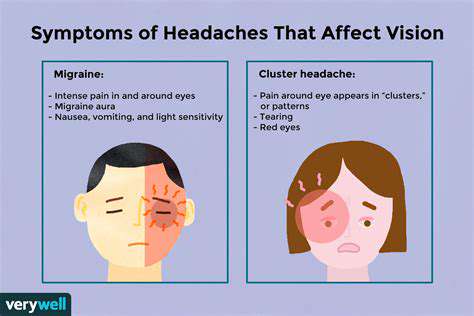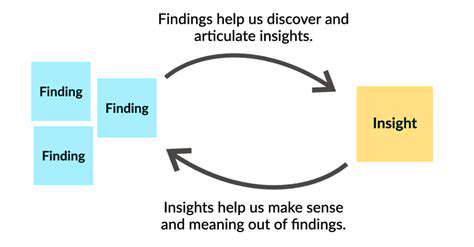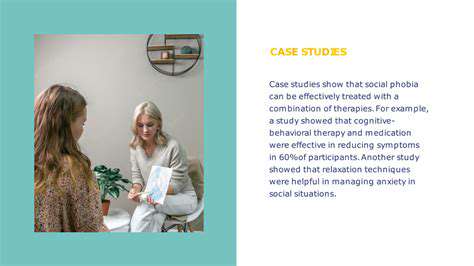Eye and Head Hurts: Exploring the Connection
Common Causes of Eye and Head Pain
Understanding Eye Strain
Eye strain, also known as asthenopia, is a common condition that occurs when your eyes become fatigued from intense use. This often happens after prolonged periods of staring at screens, reading, or doing any tasks that require a great deal of focus. Symptoms can include discomfort, dryness, and headaches, making it crucial to recognize the signs early.
To Alleviate Eye Strain, it's recommended to follow the 20-20-20 rule: every 20 minutes, take a 20-second break to look at something 20 feet away. Adjusting lighting and screen brightness, as well as using proper eyewear, can also help mitigate the effects of eye strain.
Migraines and Their Impact on Vision
Migraines are severe headaches that often come with visual disturbances, such as aura, which can include flashes of light or blind spots. These episodes can cause significant discomfort and may lead to temporary vision impairment during the migraine attack. Understanding the link between migraines and eye health is essential for effective management.
Many migraine sufferers report visual sensitivity, which can be exacerbated by bright lights or screen time. Maintaining a consistent routine, staying hydrated, and identifying personal triggers are vital steps toward managing migraines and their associated eye symptoms.
Sinus Headaches and Eye Pain
Sinus headaches occur due to inflammation and congestion in the sinus cavities, often linked to allergies or infections. This type of headache can cause pressure in the forehead, cheeks, and around the eyes, resulting in a painful sensation that may be mistaken for eye strain.
To alleviate sinus headaches, treatments can include decongestants, humidifiers, and steam inhalation. Additionally, warm compresses applied to the face may help relieve pressure. Identifying and managing allergies can also reduce the frequency of sinus-related issues.
Eye Conditions Leading to Discomfort
Various eye conditions, such as glaucoma, dry eye syndrome, or conjunctivitis, can lead to significant discomfort and even headaches. Each of these conditions has distinct symptoms, and understanding them is crucial for timely intervention. For example, dry eyes can cause a gritty sensation, which may lead to frequent rubbing and subsequent headaches.
If you're experiencing persistent eye pain or discomfort, it's essential to consult an eye care professional. Early diagnosis can help prevent any long-term damage and enable you to receive appropriate treatment, improving your overall eye health.
Stress and Its Effects on Eye and Head Pain
Stress is a multifaceted issue that can manifest physically in various ways, including head and eye pain. Tension headaches, often characterized by a tight sensation around the forehead, can be triggered by emotional or psychological stress, leading to a cascade of discomfort in both the head and eyes.
Implementing stress management techniques such as mindfulness, meditation, and regular physical activity can help reduce the frequency and intensity of such headaches. Additionally, taking regular breaks from work and engaging in relaxing activities can provide relief and improve overall wellbeing.
Symptoms Associated with Eye and Head Pain

Understanding the Symptoms of Eye Pain
Eye pain can manifest in various ways, including sharp, stabbing sensations or a dull ache. It often accompanies other symptoms such as redness, tearing, or blurred vision. Understanding these symptoms is important for determining the underlying cause of the pain.
Common causes of eye pain include conditions like conjunctivitis, glaucoma, or even sinusitis. Each condition has distinct features that can affect how the eye feels. Identifying these symptoms early can help in effectively treating the underlying issue.
Patients may also experience sensitivity to light or difficulty focusing, which can further complicate daily activities. It's crucial to seek medical advice if these symptoms persist or worsen over time. Proper assessment and diagnosis can lead to a more effective treatment plan.
Head Pain: Types and Triggers
Head pain, often referred to as headaches, can vary in type, including tension headaches, migraines, and cluster headaches. Each type has unique characteristics with specific triggers that must be addressed for effective relief.
Tension headaches are commonly caused by stress and muscle tension, while migraines can be triggered by specific foods, hormonal changes, or environmental factors. Identifying these triggers is essential for managing and preventing future episodes.
Furthermore, cluster headaches, though less common, can be extremely painful and may require different treatment approaches. Keeping a headache diary can help patients recognize patterns and triggers, ultimately leading to better management strategies.
The Link Between Eye Pain and Headaches
Many people experience both eye pain and headaches simultaneously, which can be a sign of several conditions, such as migraines or eye strain. The relationship between these symptoms can help healthcare providers narrow down potential diagnoses. Understanding this connection can significantly enhance treatment outcomes.
For instance, strain from prolonged screen time can lead to both visual discomfort and tension headaches, creating a cycle that may exacerbate symptoms. Proper ergonomic practices and regular breaks are essential in reducing these symptoms. Maintaining good eye health is integral to overall well-being.
When to Seek Professional Help
Individuals should know when to seek medical attention for eye and head pain, especially if symptoms are severe or persistent. Consulting a healthcare professional can provide essential guidance for diagnosis and treatment.
Key indicators that warrant a visit include sudden changes in vision, severe headaches that disrupt daily life, or the appearance of new symptoms like nausea or dizziness. Early intervention is often critical in managing potentially serious conditions.
Additionally, a thorough examination may involve visual tests, imaging, or referrals to specialists such as ophthalmologists or neurologists. Being proactive in addressing these symptoms can lead to a more effective treatment strategy and improved health outcomes.
Effective Strategies for Relief
Understanding the Causes of Eye and Head Pain
Eye and head pain can stem from a variety of underlying conditions, ranging from simple strain to more complex neurological issues. One common cause is eye strain, which occurs when the eyes are overworked, often due to prolonged screen time or insufficient lighting. When the eyes struggle to focus, they can become fatigued, leading to discomfort that radiates to the head.
Additionally, headaches can result from sinus pressure, migraines, or tension headaches, which may also manifest as eye pain. Understanding these connections is vital in determining the appropriate course of action for relief.
Identifying Symptoms and When to Seek Help
Recognizing the signs that indicate a more serious condition is crucial for timely treatment. Symptoms such as persistent headache accompanied by vision changes, severe eye pain, or swelling around the eyes may warrant immediate medical attention. A thorough assessment by a healthcare professional can help differentiate between harmless issues and those requiring more aggressive treatment.
Moreover, keeping a symptom diary can assist both patients and doctors in identifying triggers or patterns associated with these pains. Recording details such as the duration, severity, and accompanying symptoms can provide valuable insights for diagnosis and management.
Natural Remedies and Lifestyle Adjustments
Incorporating natural remedies into daily routines can offer significant relief from eye and head pain. Simple adjustments such as following the 20-20-20 rule—taking a 20-second break to look at something 20 feet away every 20 minutes—can help reduce eye strain. Additionally, ensuring proper hydration and maintaining a balanced diet rich in omega-3 fatty acids and antioxidants can support overall ocular health.
Practices like yoga, mindfulness meditation, and regular physical activity can also alleviate tension headaches and improve circulation, ultimately aiding in eye comfort. Adjusting lighting conditions in workspaces and using blue light filters on screens can further minimize strain on the eyes.
Medical Treatments and Interventions
For more severe cases, seeking medical interventions can be essential. Over-the-counter pain medications such as ibuprofen or acetaminophen can provide temporary relief for headaches. For conditions like migraines, prescribed treatments may include triptans or preventive medications to reduce frequency and severity.
Furthermore, consulting with an eye care professional for solutions like prescription glasses or contact lenses can significantly enhance comfort, especially for those suffering from vision-related issues. In cases of persistent pain, specialized treatments such as Botox injections or physical therapy can be considered to address underlying causes effectively.





